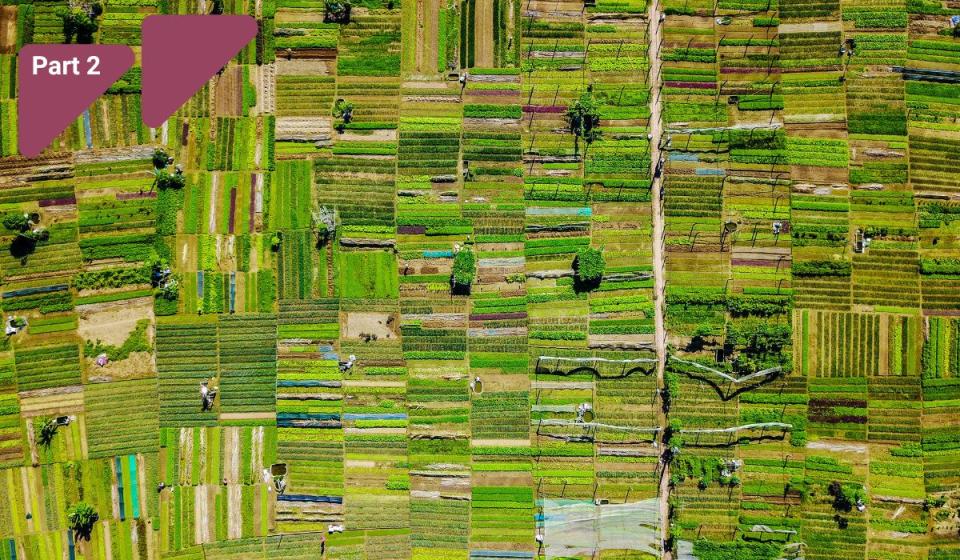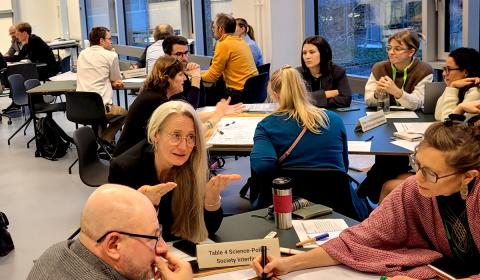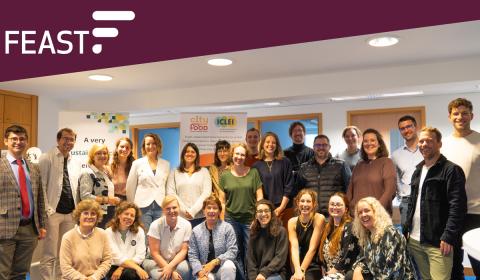Welcome to the second blog post of our series on the relationship between our food and climate. In the intricate game of our planet's survival, the way we use land is key, and is closely connected to both climate change and food sustainability. Understanding this connection is vital as we navigate an era of environmental uncertainty.
The Current Landscape of Global Food Systems and Environmental Impact
The present food system, encompassing production to consumption, sustains most of the global population and the livelihoods of over a billion individuals. Since 1961, per capita food supply has risen by more than 30%, marked by a substantial surge in nitrogen fertilizer use (around 800%) and a more than 100% increase in water resources for irrigation. Despite these improvements, approximately 821 million people suffer from hunger, 151 million children under five experience stunting, 613 million women and girls aged 15 to 49 face iron deficiency, and 2 billion adults are overweight or obese. The food system contends with challenges arising from factors such as population growth, income increase, and rising demand for animal-sourced products, alongside the overarching impact of climate change. These stressors, both climate-related and non-climate-related, directly affect the fundamental aspects of food security—availability, access, utilization, and stability1.
Land use, which used to show our harmonious relationship with nature, has changed. The widespread conversion of forests into farmland and growing urban areas has transformed the Earth's appearance. Our appetites for expansion have consequences, and they echo in the climate change arena1.
Climate change, driven by human activities, affects agriculture, reshaping the foundation of our food systems. Extreme weather events, changing rainfall patterns, and rising temperatures are not just stories but influencers in the transformation of agriculture. Crops that once thrived under specific conditions now face unpredictability, posing a threat to global food security1.
Furthermore, agriculture paradoxically contributes significantly to greenhouse gas emissions. Deforestation for more farmland, intense livestock farming, and the use of synthetic fertilizers form a trio that raises our carbon footprint. Adopting sustainable farming practices is no longer just a suggestion, but a requirement. Some balanced approaches can be seen in agroforestry, where trees and crops coexist, or regenerative agriculture which by moving away from monoculture, seeks to restore the equilibrium disrupted by industrial farming. Conserving natural habitats becomes not just an environmental choice but a necessity2.
Sustainable practices also tackle the question of individual choices, such as those in grocery stores and kitchens, and other everyday decisions in the food supply chain. Supporting local and sustainable agriculture is not just a choice for environmental awareness but a commitment to a resilient food future6. However, this implies the equality of citizens and the possibility to actually have a choice, which is not the case for everybody. It shows the current system is not built to support the easy implementation of sustainability in our lives, so it doesn't provide much decision power for one individual. On the other hand, reducing food waste, a silent contributor to environmental harm, becomes an obligation for everyone, whether it is an ethical or an economical decision3.
Global Policies, Initiatives, and the Path Forward
On the global stage, policies play a crucial role in steering the situation towards sustainability. International agreements, like the Paris Agreement, signal a collective recognition of the challenges we face4. However, their effectiveness lies not just in words on paper but in the active participation of nations, industries, and individuals. In this period, the narrative extends beyond pessimism - success stories of communities and countries adopting sustainable practices are present. The question isn't whether change is possible, but whether we're collectively embracing it.
To be more specific, The World Bank's commitment to Climate-Smart Agriculture (CSA) is evident in impactful initiatives worldwide. Through a loan, the China Green Agricultural and Rural Revitalization Program supports eco-friendly practices in Hubei and Hunan provinces. This not only reduces greenhouse gas emissions and enhances biodiversity protection but also promotes sustainable land use in central China. The Food Systems Resilience Program for Eastern and Southern Africa (Phase 3) FSRP Project, operates in Kenya, Comoros, Malawi, and Somalia, aiming to enhance food system resilience by supporting improved agricultural production and climate-smart technologies. This contributes to sustainable land use practices in these regions. In Pakistan, the Punjab Resilient and Inclusive Agriculture Transformation Project focuses on improving agricultural water access, increasing productivity, and raising incomes. By reducing disparities in water availability and increasing agricultural output, the project supports sustainable land use practices. The Agriculture Resilience, Value Chain Development, and Innovation (ARDI) Program in Jordan is set to strengthen its agri-food sector by promoting climate-smart practices and sustainable land management. In conclusion, these projects demonstrate a global commitment to addressing climate change, promoting sustainable agriculture, and ensuring food security. While a detailed evaluation is necessary for a more precise assessment of their efficacy, the financial commitments and the alignment of these initiatives with sustainability goals suggest positive impacts on the environment, agriculture, and community development towards more sustainable practices5.
However, global inclusion in sustainable land use practices is not so easy, but methods exist. Developed nations can catalyze this process by prioritizing international cooperation, funding mechanisms, and technology transfer. Robust partnerships and capacity-building initiatives could empower developing countries to implement precision agriculture and climate-smart practices effectively. Collaborative research efforts and knowledge-sharing platforms can address region-specific challenges, while inclusive decision-making processes in international forums facilitate the consideration of diverse needs. Encouraging fair trade practices that reward sustainability and ensuring market access for products from developing nations further encourage adoption. By embracing these practices, the global community can collectively navigate the sustainable practices' challenges6.
Furthermore, global action on nature is guided by the Kunming-Montreal Global Biodiversity Framework (GBF), which was agreed during The United Nations Biodiversity Conference (COP15) in 2022. It aims to address the loss of biodiversity, restore ecosystems and protect indigenous rights. It includes concrete measures to stop and reverse nature loss, such as putting 30% of the planet and 30% of degraded ecosystems under protection by 2030. Currently, 17% of land and 8% of marine areas are under protection. It also proposes ways to increase finance to developing countries, which was a significant issue during negotiations. One of the 23 targets of GBF by 2030 is to mandate transnational corporations and financial institutions to actively monitor, evaluate, and transparently communicate the risks and effects on biodiversity through their activities, supply and value chains7.
Now the stage is set for a new act where land use is a conscious decision, climate change is a challenge we acknowledge, and food sustainability is a goal we work towards. The collective performance will determine whether our story is one of resilience and renewal or an elegy for what was lost.
References
1 IPCC (2019). Climate Change and Land: an IPCC special report on climate change, desertification, land degradation, sustainable land management, food security, and greenhouse gas fluxes in terrestrial ecosystems [P.R. Shukla, J. Skea, E. Calvo Buendia, V. Masson-Delmotte, H.-O. Pörtner, D. C. Roberts, P. Zhai, R. Slade, S. Connors, R. van Diemen, M. Ferrat, E. Haughey, S. Luz, S. Neogi, M. Pathak, J. Petzold, J. Portugal Pereira, P. Vyas, E. Huntley, K. Kissick, M. Belkacemi, J. Malley, (eds.)]. In press.
2 IPES-Food (2022). Smoke and Mirrors: Examining competing framings of food system sustainability: agroecology, regenerative agriculture, and naturebased solutions. https://ipes-food.org/_img/upload/files/SmokeAndMirrors.pdf
3 Food and Agriculture Organization (FAO) (2013). Food Wastage Footprint. Food Summary Report.
4 United Nations Framework Convention on Climate Change (UNFCCC) (n.d.). The Paris Agreement.
5 World Bank Group (2023). Climate-smart agriculture (CSA), Sustainable Agriculture and Climate Change.
6 World Bank (2021). Toward a Holistic Approach to Sustainable Development: A Guide to Integrated Land-Use Initiatives.
7 UN Environment Programme (2022). COP15 ends with landmark biodiversity agreement.



